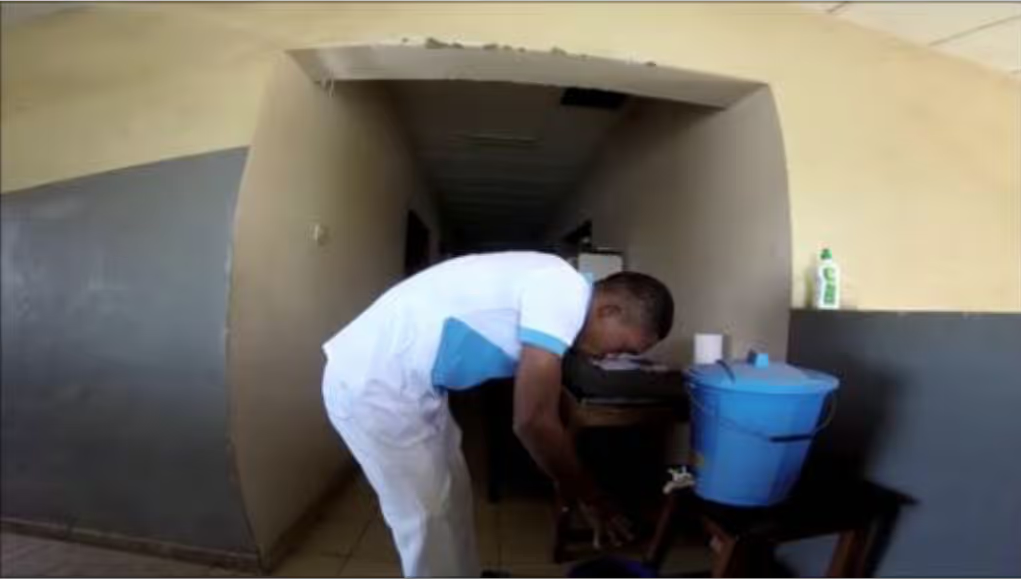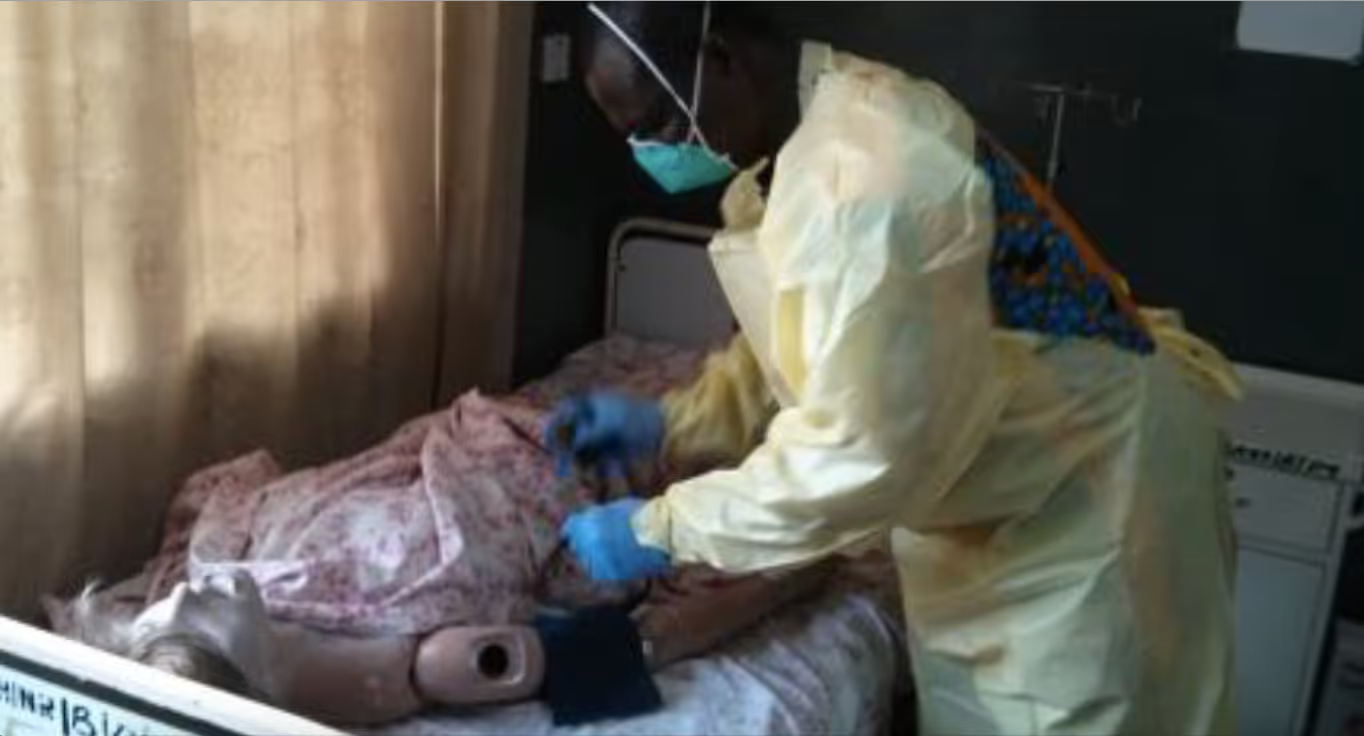Time: a threat to infection control knowledge retention?

We learn… 10 percent of what we read, 20 percent of what we hear, 30 percent of what we see, 50 percent of what we see and hear, 70 percent of what we discuss with others, 80 percent of what we experience, and 95 percent of what we teach to someone - William Glasser.
In our last blog entry, we described the training activities that took place in May/June 2015 at which, participants (hospital clinical workers) were exposed to simulated clinical scenarios involving infectious cases. This was followed by interactive one-on-one training sessions on infection control practice using Rapid Cycle Deliberate Practice (RCDP) methods. The training curriculum covered hand hygiene and transmission-based infection control practice. Using RCDP methodologies, the participant is requested to demonstrate a skill under close observation, is stopped when an error or breach in protocol occurs, is immediately given corrective feedback by the instructor, and repeats the task until proficiency is demonstrated (deliberate practice and mastery learning). By using the RCDP technique in simulated sessions, the program participants were given multiple opportunities to learn from their errors and train to proficiency with guided instruction but without any risk to themselves or any patients.

During pre- and post-training assessment sessions, we simulated encounters with patients having infectious diseases requiring contact (cholera) and droplet (meningococcal meningitis) precautions. An airborne-transmitted infection (chickenpox) was used for the RCDP demonstrations during the training sessions. The demonstrated infections were deliberately chosen because of their continued endemic prevalence in the West African region.
On conclusion of the training sessions, each partnering institution was mandated to conduct training sessions at a secondary site for a sample of health care workers. Health facilities that were identified for secondary training activities were as follows:
- St. Mary’s Catholic Hospital, Gwagwalada: to be trained by University of Abuja Teaching Hospital trainers (Nigeria).
- Enugu State University Teaching Hospital, Enugu State: to be trained by University of Nigeria Teaching Hospital trainers (Enugu, Nigeria).
- Tamale West District Hospital, Tamale: to be trained by Tamale Teaching Hospital trainers (Ghana).
Each facility had a 3-month time period to organize and conduct training activities at designated secondary training sites.
Why 3-months?
Similar studies, especially those utilizing simulation, have shown that significant decay in knowledge and skills begin to occur approximately 3-5 months after training.
Each training team was provided with a pilot version of the training manual, a supply of personal protective equipment (PPE), and funds for logistical support.
What has happened since then?
The Johns Hopkins team returned to Nigeria and Ghana in Sept/Oct 2015 to visit the primary and secondary training sites after receiving confirmation that secondary training activities had been completed. The objective of this trip was to assess the primary trainees for retention of knowledge, and to assess the effectiveness of the training delivered to secondary trainees by the primary trainees.
Each partnering institution was successful in conducting training activities at their designated partnering site. In total, 64 health workers were trained across all three secondary training sites.
The Johns Hopkins team conducted reassessment simulation sessions in the form of clinical drills. Using the enrollment list from the previous training sessions, the team contacted trainees individually, giving short notice to meet for a few minutes. On arrival, the participant was asked to attend to a simulated patient with an infectious disease. The scenario involved a suspected case of tuberculosis, with an incidental finding of diarrheal disease. This case called for both contact and airborne precautions.

Our findings:
At the primary sites, we observed marked improvement in adherence to infection control measures. More participants performed hand hygiene before and after contact with the patient, compared to baseline practice prior to training. Importantly, participants paid attention to the mode of transmission when deciding what PPEs were required for the scenario, limiting the amount of unnecessary PPEs donned and minimizing waste. There was a significant decrease in personal and environmental contamination compared to observed contamination during the baseline sessions. This performance was replicated at the secondary sites.
The team observed that the terms “droplet” vs “airborne” transmission are a source of confusion among study participants. The stethoscope which was found to be a vehicle for personal contamination during the primary training sessions continued to prove to be an Achilles heel for many participants who would hang stethoscopes on their necks after it had come in contact with the ‘contaminated patient’.
Where we are now:
- Training has been conducted in 3 secondary training sites by the 3 primary training sites.
- Local trainers were identified at the three primary training sites and potential trainers were also identified during the visit to the secondary training sites.
- Our reassessment of retention of knowledge among primary trainees revealed that significant retention of infection control knowledge and appropriate practice in simulated sessions.
- Data from the reassessment activities is currently being compiled for review and analysis.
- We have received feedback on the infection control manual from our local trainers and infection control experts. These are being reviewed for incorporation into a revised version of the manual.
- In a bid to minimize the cost of training activities utilizing this method, the team is exploring opportunities to assess the effectiveness of the training curriculum as a “stand alone” tool in printed, audio or visual media.
Read our next blog to learn more about our use of simulation to train health workers on preventative infection control measures. Please feel free to contact us with inquiries you may have by sending an email to Adaora M Chima, MBBS, MPH ([email protected]) or Benjamin H Lee, MD, MPH ([email protected]).
Stay updated
Sign up for our newsletter to receive regular updates on resources, news, and insights like this. Don’t miss out on important information that can help you stay informed and engaged.
Related articles
.png)


Explore Elrha
Learn more about our mission, the organisations we support, and the resources we provide to drive research and innovation in humanitarian response.